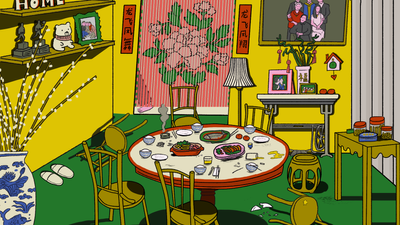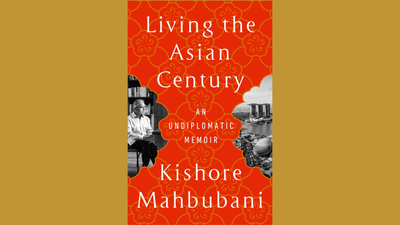In 2017, I assisted my Masters’ supervisor, Jan Mrazek, as he led a dozen undergraduates on a sailing expedition around Riau. “Pak Jan”, as everyone called him, was my first teacher in Javanese Gamelan after I stumbled upon his ensemble while an undergraduate myself. So it felt only natural that we would bring on board a Javanese ciblon—a double-barrelled drum whose name derives from making rhythms by slapping the surface of the water—supplementing it with a makeshift saron fashioned from seven beer bottles tuned by drinking various amounts from each one, and struck with a spoon. One day, after playing “Gambirsawit” together in this skeletal configuration—perhaps evoking its memory within ourselves rather than sounding it out for our listeners—he remarked how strange it felt to play gamelan while sailing: to bring a music so firmly tethered to the land of central Java—its mountains, paddy fields, villages, cities and courts—onto the breathing surface of the water, where new islands would creep out from the horizon and drift away by our sides; and beneath us always the rise and fall of the sea.
It is tempting to start an essay about Javanese gamelan on the island of Java, discussing how the culture runs through the music like the tree of life on a kayon, with gamelan in Singapore as one of its branches. But here, I want to paint a different picture closer to my own experience: not so much rooted in place but floating on a sea that connects ensembles and practitioners scattered across the globe. I want to follow the currents beneath me, tracing their fluid paths, their chance connections, everything at once so international, yet drawing back to Central Java: its culture, its landscape, its musicians.
I embarked on this musical journey in 2007, 10 years prior to that sailing trip. A post-army holiday to Cambodia and Bangkok in 2005 inspired me to study Thai at the National University of Singapore (NUS), a turn away from the fixation I had on the UK as a student of English Literature. This connection led me to a Thai classical music workshop where I befriended several musicians from the university’s Singa Nglaras Javanese Gamelan Ensemble. They asked if I wanted to drop by one of their own latihan. I agreed, though I had only the vaguest idea of what that might involve—I could just about recall them performing at a small cultural event, but somehow the music had left little more than a vague memory of tinkling percussion.
As a new player, I was given some notation and told to try and follow along on one of the instruments that play, in unison, a melody called the balungan—a skeleton on which other parts flesh out, dress, and adorn. (Balung is Javanese for bone, equivalent to tulang in Malay.) Although playing it appeared relatively simple—the instruments had only seven keys, the notation was a straightforward sequence of numbers, the pace was slow—I found myself lost in the waves of sound that surrounded me. The music seemed to follow a pulse of its own, speeding up then slowing down at whim: even mimicking the experienced musicians was difficult. Other parts appeared to float alongside the balungan with a logic I couldn’t discern, until finally the music gave one final swell, then slowed towards the deep rumble of a final gong. A collective sigh of satisfaction; then the talking and laughing of the musicians resumed.
This experience of playing the music—as opposed to just listening to it—left a deep impression on me. Beyond the inevitable confusion and frustration, I remember a deep admiration for how the music and its players stayed together without any apparent conductor, playing their different parts, moving through the sections, and navigating changes in speed as casually as a group of friends out on a stroll, rather than a contingent on the march. This musical easiness was mirrored in the atmosphere of the latihan itself, at once relaxed yet motivated: a far cry from my memories of school leaders threatening the choir with poor CCA (co-curricular activity) grades if we did badly during the Singapore Youth Festival central judging; or feeling that the years of study and technical virtuosity needed to be a musician were out of my reach. I think I had always wanted to have music at the centre of my life, and finally a door had opened for me.
When I began playing I had embarrassingly little idea about where the music came from, simply that I enjoyed it as music. In my mind, it was something vaguely “Malay” (after all, Indonesia is kind of Malay right?) and I had no real idea where “Javanese” really fit within that cultural category. It took a much longer journey into the music—learning about the culture that underpinned it, meeting musicians and enthusiasts, studying in Java myself—to undo the blinkers that I had worn until that point in my life.





